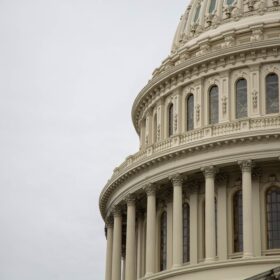For the life science industry, patents are more than just tools for restricting the commercial activities of direct competitors. Patents are being used more and more to generate substantial additional returns on research and development (“R&D”) investment costs through licensing. Smaller and early-stage companies can use out-licensing revenues as non-dilutive equity to fund and to advertise their R&D programs. Unfortunately, smaller and early-stage companies rarely dedicate the resources necessary to set up an effective out-licensing program.
Early-stage partnering is now a vital component of business strategy for many life science companies.[1] Due to the fierce competition for late-stage life science assets, larger life science companies must look to early-stage life science companies for access to new and promising compounds and technologies. For early-stage life science companies, entering into a partnership with a larger, more established company increases their visibility, validates their technology in the life science industry, and helps fund their R&D programs. Successful licensing transactions can also attract further private or public equity investments. However, because smaller and early-stage companies have fewer resources, experience, and leverage than the larger life science companies, negotiating with a larger life science company before making adequate preparations may lead to suboptimal results.
A strong technology transfer program can help smaller and early-stage companies establish an intelligent IP strategy, placing companies in a more solid position for future negotiations with larger life science companies. Further, there are ways to structure transactions that enable small and early-stage life science companies to effectively mitigate and manage the risks inherent in business transactions.
This article is the first of a three-part series:
Part I – Creation of the Intellectual Property
Part II – Preparing for the Transaction
Part III – Choosing the Right Transaction
IP Creation
As technologies are developed and reduced to practice, intellectual property (IP) can be created. Owning valuable IP permits a life science company to consider a variety of business transactions, which in turn can validate the products and the company.
To achieve either a significant technology transfer program or to prepare for an eventual acquisition, a company’s technology must be well protected. Several forms of IP protection are available. The most common is patent protection. Trade secrets can also be very valuable for protecting some life science technologies, especially when harmonized with a patent strategy. Despite the common misconception, patents and trade secrets are not mutually exclusive.[2] For example, a company with an algorithm for optimizing probes and primers for improved diagnostic PCR assays may choose to patent the optimized probes and primers while keeping the algorithm a trade secret. Other forms of IP protection, such as copyrights and trademarks, should also be incorporated in a company’s intellectual property whenever appropriate.
Building a patent portfolio can be a substantial financial commitment for small and early-stage companies with limited financial resources. A few suggestions to help create an intelligent, cost-effective IP strategy are provided below.
Provisional vs. Utility Patent Application
Provisional patent applications have several advantages for small and early-stage companies.[3] First, the filing fees are substantially lower than for a utility application. Second, provisional patent applications are not published and are not examined. They automatically expire after one year unless they are converted into a regular utility application.[4] Therefore, a patent applicant can strategically capture subsequent developments of their invention during the year in second, third, … provisional applications. The applicant can then convert all these provisional applications into one utility application at the one-year anniversary of the first provisional application. This IP strategy is far more cost-effective than filing serial utility applications. Finally, and a very important advantage for life science companies, the 20-year patent term from the date of filing does not include the filing date any provisional patent applications.[5] As such, provisional applications can effectively provide 21 years of protection. This is an important advantage, because most life science technologies require many years to be commercialized and, for successful life science technologies, the revenues are often concentrated towards the end of the 20-year term.
Alternatively, filing a utility patent application from the outset can be a preferable strategy when the patent applicant has a shorter path to commercialization, a need to establish patentability quickly for, e.g., a potential investor or collaborator, or a need for a quicker path to an issued patent to assert against potential infringers.
Scope of the Patent Application
Life science companies frequently develop technologies with potential indications or uses outside of their business models. These companies are then faced with spending additional capital to secure patents with a scope of protection that covers substantially more or different than their business model. Securing broader patents can be a worthwhile investment if the company also devotes resources in a significant technology transfer program. Otherwise, broader patents will be an unnecessary expense. And, the IP strategy may appear unfocused to potential investors.
Life science companies often fall into the trap of trying to cover all these additional potential indications or uses by merely including them in a list embedded in the patent application. However, without appropriate support, claims to these unsupported indications or uses will likely be rejected due to insufficient written description or lack of enablement.[6] If the company subsequently develops the empirical data as support and wants to file a later patent application to cover these indications or uses, the company’s earlier published patent application will likely be cited as prior art to deprive the later, more extensive patent application of novelty. Accordingly, a prudent strategy is to either put an adequate written description and prophetic support in the original application or to wait to file for patent protection on these additional indications when the company develops adequate support.
Patent Cooperation Treaty (PCT) Applications
The Patent Cooperation Treaty (PCT)[7] is an international patent law treaty that provides a unified procedure for filing patent applications in each of the over 150 Contracting States.[8] By converting the provisional applications to an international patent application under the PCT, a life science company can simultaneously preserve patent protection in many countries for up to 30 months from the date of the earliest priority filing.[9] After 30 months, the life science company may need to enter the National/Regional Phase in the countries for which they wish to secure patent rights. This National/Regional Phase can get quite expensive, depending on the number of countries. As such, a PCT application beneficially delays costs associated with National/Regional patent protection until the life science company has secured financing, a licensee, or a strategic partner.[10]
The international application provides another important advantage. It is subjected to an “international search” carried out by one of the major patent offices appointed by the PCT Assembly as an International Searching Authority (ISA). The resulting International Search Report (ISR) provides the applicant with a list of the published documents that might affect the patentability of the invention claimed in the international application. The ISA also prepares a written opinion on patentability for the applicant. This Written Opinion provides valuable insight to the life science company about the strength and scope of patent protection likely to be obtained for their invention. A favorable ISR and Written Opinion can also provide comfort to any potential investor, licensee, or another party interested in acquiring rights to the invention.
Patent Prosecution Highway (PPH)
The Patent Prosecution Highway (PPH) is a program initially launched in 2014 to speeds up the examination process for corresponding National/Regional Phase applications filed in the participating patent offices. Under the PPH in participating patent offices, a patent applicant who receives a final ruling from a first patent office that at least one claim is allowed may request a fast track examination of the corresponding claims in the corresponding patent application pending in a second patent office. The PPH procedure enables an applicant to reach a final disposition of the patent application more quickly and efficiently than the standard National/Regional examination process.
At present, there are over 20 participating patent offices participating in the PPH, including the U.S. (USPTO), the European Patent Office (EPO), Australia (IPAU), Canada (CIPO), China (CNIPA), and Japan (JPO).[11] These patent offices are the offices for the jurisdictions for patent protection commonly sought by life science companies.
An often-overlooked strategy is the use of the PCT application (i.e., a favorable Written Opinion of the ISA) as the basis for a PPH request. Issued patents reduce the risk and enhance valuation for any potential investor, licensee, or another party interested in acquiring rights to the invention. As such, an intelligent IP strategy is to submit claims in the PCT application that more narrowly cover the company’s commercial embodiments to enhance the chance of receiving a positive Written Opinion. Filing a PPH request based on a positive Written Opinion accelerates the examination process and getting an issued patent. Filing a PPH request based on a positive Written Opinion also typically results in substantial savings in patent prosecution expenses. These results are important advantages for smaller and early-stage life science companies. Broader claims can be pursued later in subsequent continuation applications.
Foreign Patent Coverage
Obtaining broad foreign patent coverage is very expensive, especially for cash-limited smaller and early-stage life science companies. However, upon approaching the National/Regional Phase deadline, the patent applicant is reminded frequently that this will be the final opportunity to seek foreign protection for their invention in all the PCT signatory countries. Smaller and early-stage life science companies often succumb to this pressure and file broadly in many foreign markets that they will never enter. The financial burden is further compounded when the company seeks protection for their second, third, fourth, … invention.
Given the long path to commercialization for life science technologies, too many smaller and early-stage life science companies, unfortunately, abandon patent protection in multiple countries several years later to lower their expenses and burn rate. Abandoning patent applications after having spent tens or hundreds of thousands of dollars is not a sound use of financial resources.
A more intelligent IP strategy involves the selection by the life science company of a predetermined set of countries for patent protection based on the more important commercial markets for their technology. For a more sophisticated IP strategy, the company may have two sets of countries: (i) a narrow list of foreign countries for most invention; and (ii) a broader list of countries for the more valuable or cornerstone inventions.
For maximal valuation purposes, a patent portfolio with issued patents and consistent country filings across several patent families projects more favorably to any potential investor, licensee, or another party than a patent portfolio with inconsistent country filings across different families with dozens of intentionally-abandoned applications in too many countries.
References:
[1] U.S. Department of Justice and the Federal Trade Commission, Antitrust Guidelines for the Licensing of Intellectual Property, January 12, 2017, § 2.3 Procompetitive Benefits of Licensing.
[2] See, On-Line Techs., Inc. v. Bodenseewerk Perkin-Elmer GmbH, 386 F.3d 1133, 1141 (Fed. Cir. 2004) (quoting RESTATEMENT (THIRD) OF UNFAIR COMPETITION § 39 cmt. f (1995)).
[3] 35 U.S.C. § 111(b)(1) (2011).
[4] 35 U.S.C. § 111(b)(5) (2011).
[5] 35 U.S.C. § 154(a)(2)-(3) (2011).
[6] A patent application must disclose enough information to satisfy the requirements of 35 U.S.C. §112. See, e.g., Ariad Pharmaceuticals et al. v. Eli Lilly and Company, 598 F.3d 1336 (Fed. Cir. 2010) (en banc) (defining the written description requirement) and In re Wands, 858 F.2d at 737, 8 USPQ2d at 1404 (Fed. Cir. 1988) (defining the enablement requirement). Both the Ariad case and the Wands case concerned life science patents. The information that is disclosed in a patent is not protectable as a trade secret.
[7] The PCT was concluded in 1970, amended in 1979, and modified in 1984 and 2001. See, The PCT Applicant’s Guide, https://www.wipo.int/pct/en/guide/
[8] The PCT currently has 153 Contracting States. See, https://www.wipo.int/pct/en/pct_contracting_states.html
[9] The earliest priority date is usually the filing date of the first provisional patent application. Some Contracting States permit national stage entry at 31-months or later. See, https://www.wipo.int/pct/en/texts/time_limits.html
[10] See, The PCT Applicant’s Guide – International Phase, CHAPTER 4: USEFULNESS OF THE PCT FOR APPLICANTS, https://www.wipo.int/pct/en/guide/ip04.html#_chapt4
[11] For the PPH procedure in the U.S. Patent & Trademark Office, see M.P.E.P § 708.02(c) Patent Prosecution Highway Program.




